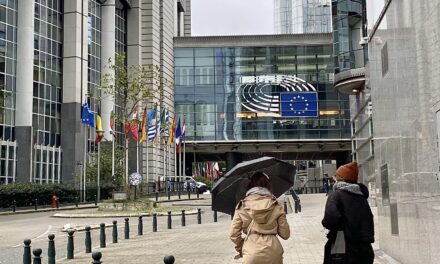The European Union has implemented a directive that aims to revitalize Europe’s social dimension, with the rules needing to be implemented by November 2024. The directive tries to ensure a minimum wage standard of 60 percent of the median income, in addition to standards for collective bargaining and social dialogue. Still, although this directive could play a vital role in improving European workers’ incomes, it is not mandatory for member states to introduce a statutory minimum wage. Have the European minimum wage guidelines been effective in achieving their goals, or have they had little to no impact?
Minimum wage consists of the minimum salary an employer is required to pay wage earners for the work they have performed during a certain amount of time. The European Union is trying to change the way member states regulate their minimum wages. According to the European labor organization, the minimum wage in EU member states is not always set by the government. Instead they are determined by industry sectors or independent regions. This means that its difficult for all of the minimum wages to increase at the same time and at the same speed.
Casper Cornelisse, director of CNV Youth, speaks about the importance of the minimum wage: ‘The power of companies and employers has grown tremendously. Most of the time, those companies are not willing to pay a decent salary to a worker. The minimum wage is a way of securing a pay, through the law, that is not randomly chosen by the employer and ensures a secure life for someone under contract. Because trade unions aren’t as strong anymore, our power has weakened. But the minimum wage is one of the causes we fight the hardest for.’
The 2022 EU directive on adequate minimum wages is an important move toward creating a fairer and more inclusive Europe. For many years, EU policies focused on promoting free markets, often at the expense of workers’ rights. This became even more evident during the economic crisis of the 2010s, when the European Commission encouraged changes to labor laws that made it harder for workers to negotiate wages and caused wages to drop. These policies led to greater social inequality and poverty.
By the mid-2010s, people began to recognize the damaging impact of these policies, which, according to researchers Torsten Müller and Thorsten Schulten, fueled growing Euroscepticism, political instability, and events like Brexit. The idea of a “Social Europe” gained support, focusing on the importance of strong social systems to promote unity and stability. Earlier initiatives, like the 2017 European Pillar of Social Rights, were mostly symbolic, but the adoption of the minimum wage directive is a significant step toward strengthening the EU’s social policies and improving workers’ rights.
 The 2022 EU Directive on minimum wages has already started to change how wages are determined and how collective bargaining works across Europe, even though it won’t be fully implemented until November 2024. The introduction of a “double decency threshold” has led several countries to update their labor laws to comply with the directive. However, implementing it can be difficult for many EU member states. Economics professor Daniël van Vuuren explains, “It’s very challenging for all European countries to implement a minimum wage. Many member states are already close to the maximum debt allowed in the EU. If social security costs suddenly increase, they could exceed these limits. There are definitely a lot of constraints.”
The 2022 EU Directive on minimum wages has already started to change how wages are determined and how collective bargaining works across Europe, even though it won’t be fully implemented until November 2024. The introduction of a “double decency threshold” has led several countries to update their labor laws to comply with the directive. However, implementing it can be difficult for many EU member states. Economics professor Daniël van Vuuren explains, “It’s very challenging for all European countries to implement a minimum wage. Many member states are already close to the maximum debt allowed in the EU. If social security costs suddenly increase, they could exceed these limits. There are definitely a lot of constraints.”
According to Torsten Müller and Thorsten Schulten, Bulgaria and Czechia have added this threshold to their labor laws, while Slovakia has set its minimum wage at 57% of the average wage. Countries like Croatia, Malta, Ireland, and Estonia have used the threshold as a guideline for raising wages, and it has prompted discussions about fair wages in Germany, Spain, and Latvia. The directive has already led to significant wage increases and reforms, but its full effect will depend on how each country implements it.




